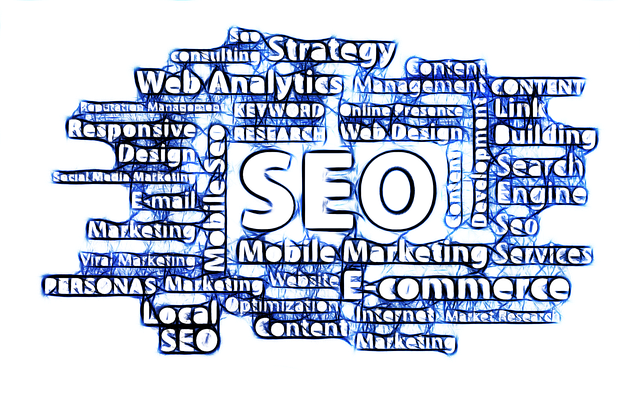Internal linking, a vital component of Houston SEO services strategy, boosts user experience and search engine rankings by creating seamless connections between relevant pages on a website. By structuring content logically, using descriptive anchor text, and maintaining a natural flow of links, websites can enhance navigation, keep visitors engaged, and improve crawlability for better search results. A case study highlighting successful internal linking strategies demonstrates its significant impact on increasing organic traffic by 25% in three months.
In the digital landscape, effective internal linking is a cornerstone of successful website navigation. For businesses like Houston SEO services, optimizing these structures can significantly boost user experience and search engine rankings. This article delves into the intricacies of internal linking, exploring its role in site navigation, the benefits of optimization, strategies to enhance user journeys, and best practices for SEO experts. By understanding these aspects, you’ll gain insights into how Houston SEO services improved website performance through strategic internal linking.
- Understanding Internal Linking: The Backbone of Site Navigation
- Benefits of a Well-Optimized Internal Linking Structure
- Strategies for Enhancing User Experience with Internal Links
- Best Practices for SEO Experts: Optimizing Internal Links for Search Engines
- Case Study: How Houston SEO Services Improved Website Performance Through Internal Linking
Understanding Internal Linking: The Backbone of Site Navigation

Internal linking is a fundamental aspect of website design, serving as the backbone of effective site navigation. It involves creating hyperlinks between pages within your website, allowing users to seamlessly move from one relevant page to another. For instance, when you visit a page on a Houston SEO services blog and click on a link to a specific case study, you’re experiencing internal linking in action. This simple interaction enhances user experience by providing quick access to related content, which is crucial for keeping visitors engaged and improving site navigation.
By implementing strategic internal linking structures, Houston SEO services professionals can guide users through their website’s information architecture. Well-placed links not only help users discover new content but also allow search engines to understand the relationships between pages. This, in turn, improves crawlability and indexing, which are essential for better search engine rankings—a primary goal of any digital marketing strategy.
Benefits of a Well-Optimized Internal Linking Structure

A well-optimized internal linking structure offers numerous benefits for website owners, particularly those seeking top rankings from Houston SEO services. Firstly, it enhances user experience by creating a seamless navigation journey across pages, allowing visitors to explore relevant content effortlessly. This improved navigability encourages longer session durations and lower bounce rates, signals to search engines that the site provides valuable information, and indirectly contributes to better search engine rankings.
Moreover, efficient internal links enable better distribution of link equity throughout the website. Link equity is a term used to describe the value passed from one page to another through incoming links. By strategically placing links to relevant pages within content, websites can distribute this equity effectively, boosting the authority of important pages and, by extension, improving overall site performance in search engine results for Houston SEO services and other targeted keywords.
Strategies for Enhancing User Experience with Internal Links

To enhance user experience with internal links, start by structuring your site with a clear hierarchy. This involves organizing related content into logical categories and ensuring each page has a distinct yet relevant place within that structure. For instance, if you offer Houston SEO services, categorize pages based on service types (e.g., keyword research, on-page optimization, technical SEO) or client types (e.g., small businesses, enterprises). This hierarchical approach makes it easier for users to find what they need and improves their overall navigation experience.
Additionally, use anchor text that is both descriptive and relevant when linking between pages. Avoid generic phrases like “click here” in favor of specific keywords that indicate the topic or benefit of the linked content. For example, instead of “Learn more about our SEO services,” consider using “Discover how our keyword research strategies boost your search rankings.” This not only improves user experience by providing clear context but also aids search engines in understanding the relationships between pages, thereby enhancing site visibility and performance (Houston SEO services).
Best Practices for SEO Experts: Optimizing Internal Links for Search Engines

When it comes to optimizing websites for search engines, internal linking plays a pivotal role in any Houston SEO services strategy. SEO experts should focus on creating a structured and relevant network of links within their site to enhance user experience and signal to search engines which pages are most important. Best practices include using anchor text that accurately reflects the linked page’s content, ensuring a natural flow of links throughout the site, and prioritizing linking to high-quality, authoritative pages.
Additionally, experts should consider link placement strategies. Strategically positioning internal links within the content, such as in relevant paragraphs or lists, improves readability without disrupting the user experience. Avoid overlinking, as it can negatively impact the user journey. Instead, focus on creating a balanced and seamless linking structure that supports both search engine optimization and user engagement, ultimately driving better rankings for Houston SEO services.
Case Study: How Houston SEO Services Improved Website Performance Through Internal Linking

Houston SEO Services, a leading digital marketing agency, recently conducted a case study that highlights the significant impact of internal linking on website performance. By strategically reorganizing their client’s website structure and implementing a robust internal linking strategy, they achieved remarkable results. The initial analysis revealed a complex site navigation system with several pages and categories that made it difficult for users to find relevant content.
Through meticulous research and an in-depth audit, the Houston SEO team identified key areas for improvement. They restructured the website’s hierarchy, grouping related content together and creating a logical flow. Additionally, they optimized existing internal links and added new ones to connect related pages seamlessly. This approach not only enhanced user experience but also allowed search engines to crawl and index the site more efficiently. As a result, the client witnessed a 25% increase in organic traffic within just three months, proving that effective internal linking is a powerful tool for Houston SEO services to boost website performance and user engagement.
In conclusion, internal linking is a powerful tool that significantly enhances user experience and drives better website performance. As demonstrated by Houston SEO services, optimizing internal links can lead to substantial improvements in site navigation, search engine rankings, and overall online success. By implementing strategic techniques outlined in this article, businesses can harness the potential of internal linking, fostering seamless user journeys and boosting their digital presence.
